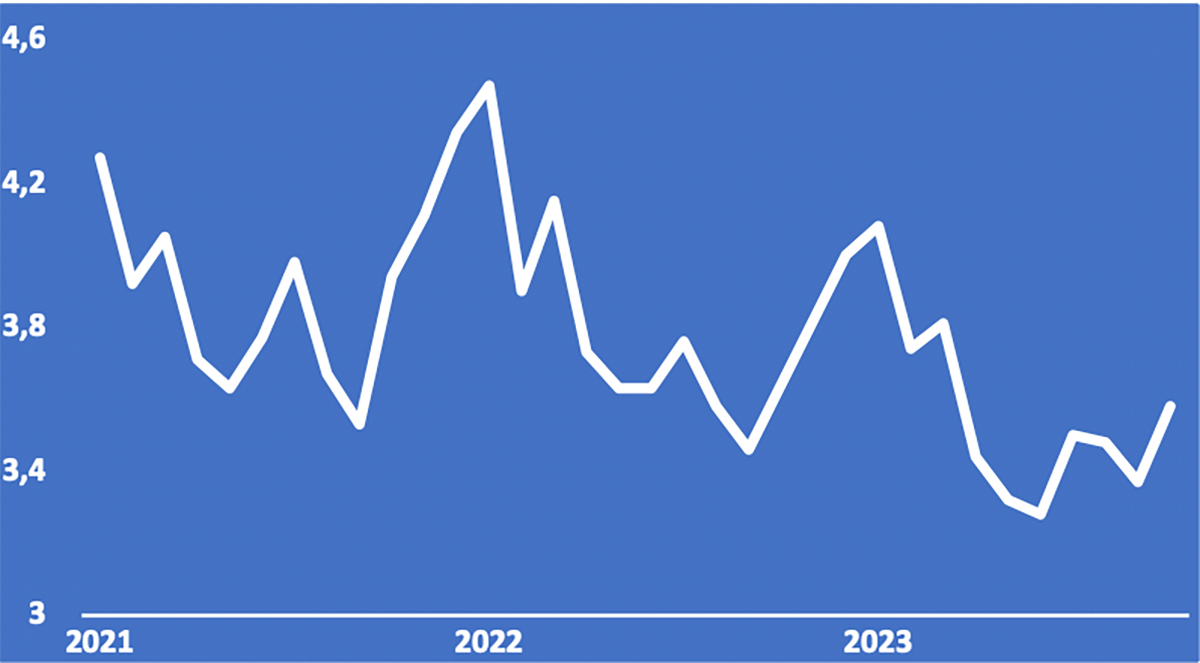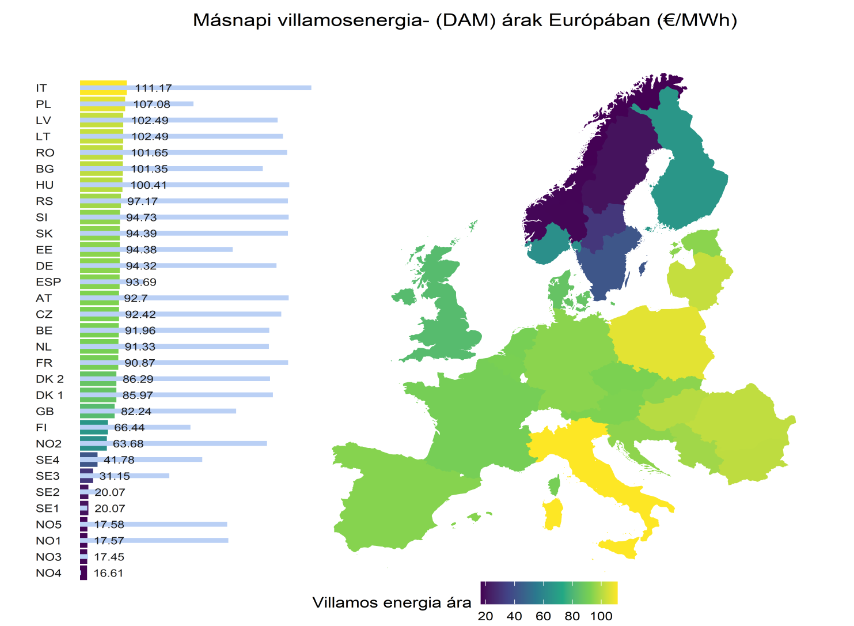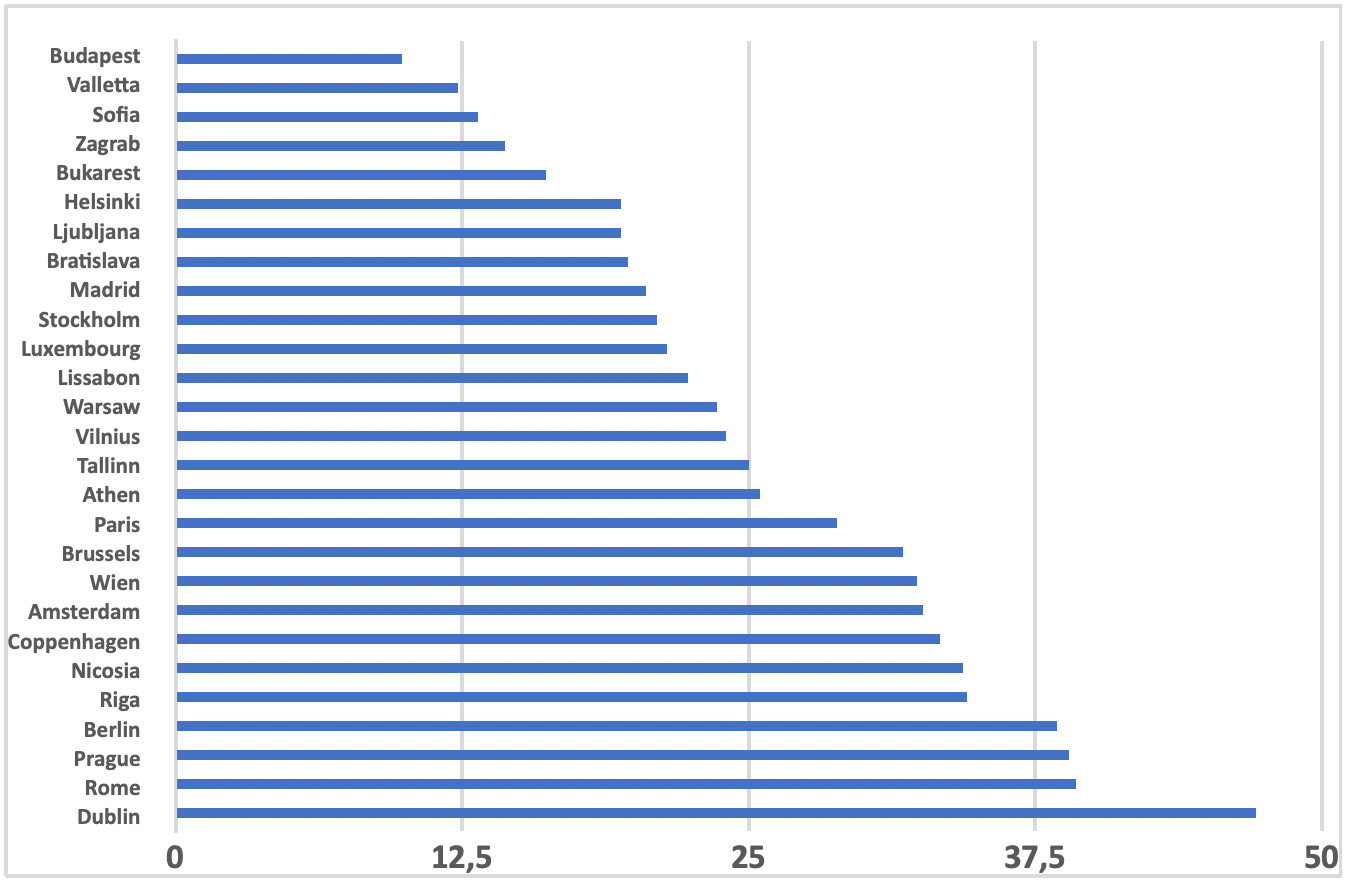In October 2023, electricity consumption was 1.6% lower than a year earlier, according to the Hungarian Central Statistical Office, continuing the downward trend of previous months.
One of the reasons for this was the continuous spread of growing small household power plants (e.g., solar panels), which was not included in the statistics (this reduces consumption due to net metering). Another reason was the growing awareness of non-residential customers, who were getting electricity at market prices and were forced to cut their consumption due to the surge in prices over the past year and a half.
Gross electricity consumption per month, 2021-2023 (thousand GWh)

Source: HCSO
In August, electricity consumption fell by 2.9% in Hungary, but the EU average was down by a larger 3.8%, and the average decrease in Central Europe was also 3.6%. Meanwhile, Hungary had the 7th most expensive wholesale electricity market price (next-day DAM) for businesses in the EU, at over EUR100/MWh (nearly HUF39/kWh). Prices have continued to rise since then, largely due to higher gas prices.
On the residential side, no significant drop in consumption has yet started, primarily due to energy prices affected by “overhead reductions”. The cheapest access to electricity for households was in Hungary compared to other EU countries (comparing prices in the capital). While in Hungary the reduced price was only 9.9 euros/kWh, in August this year in Romania the price per kWh was 64% higher, in Austria more than 227% higher, while in Berlin, Rome or Prague the price was almost four times higher than in Hungary. The “market price” for Hungarian residents was roughly in line with prices in Slovakia.
DAM electricity prices in Europe (Euro/MWh), August 2023

Source: MEKH
Average electricity prices for residential consumers in EU capitals, August 2023 (eurocent/kWh)

Source: MEKH
Download full analysis






